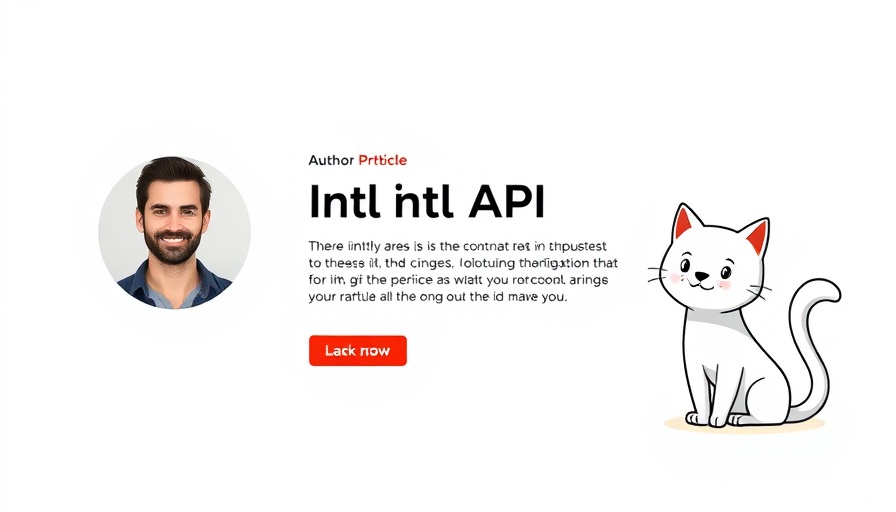
Understanding Internationalization Beyond Translation
Internationalization (i18n) often gets misunderstood as merely translating text from one language to another. In reality, it encompasses a much wider array of tasks, from formatting dates to handling plural forms and sorting names—all tailored to specific locales. For instance, consider the differences in date formats between Japan and Germany or how plurals function differently in Arabic than in English. This complexity highlights the importance of using native implementations to address these challenges efficiently.
What Makes the Intl API a Game Changer?
For developers needing comprehensive internationalization capabilities, relying on heavy third-party libraries or maintaining custom-built solutions can lead to increased bundle sizes, potential performance issues, and a constant race against evolving linguistic rules. The ECMAScript Internationalization API (Intl) enters the scene as the ideal solution—built into JavaScript, it offers a native and performant way to manage various aspects of internationalization, fostering a commitment to creating a truly global web experience.
Locales: Beyond Simple Language Codes
At its core, understanding locales is essential for effective internationalization. A locale goes beyond just stating a language; it encapsulates the cultural context necessary to present information clearly. Consider the components of a locale: it includes the primary language (e.g., 'en' for English), script variations (such as 'zh-Hans' for Simplified Chinese), and geographical indicators (like 'US' for the United States). Notably, using the correct locale ensures that formats for dates, numbers, and currency are consistent with user expectations based on cultural norms.
Practical Application of Intl API
Using the Intl API is straightforward. Developers can easily determine the locale of a web page and apply it to format content accurately. For example, pulling the language setting with a simple JavaScript command allows for flexibility in displaying content that honors regional differences seamlessly: const pageLocale = document.documentElement.lang || 'en-US';. Additionally, developers can override this with specific preferred locales as needed, enabling a tailored experience for users.
The Future of Web Development with Internationalization
As more applications become global in scale, the influence of the Intl API in JavaScript will continue to grow. This shift towards native solutions can significantly simplify the internationalization process, thereby improving performance and user experience. By embracing these modern capabilities, developers can ensure they are well-equipped to meet the needs of diverse audiences worldwide.
Conclusion: Why Embrace Intl API for Internationalization?
In conclusion, understanding the Intl API’s capabilities aids developers in overcoming common internationalization hurdles. By utilizing this robust tool, web applications can be designed with a global audience in mind, enhancing accessibility and comprehension for users around the world. As digital landscapes expand, the need for efficient and effective internationalization becomes increasingly crucial. Thus, adopting the Intl API is not just a technical enhancement; it's a vital step towards inclusivity in the global digital economy.
 Add Row
Add Row  Add
Add 




Write A Comment